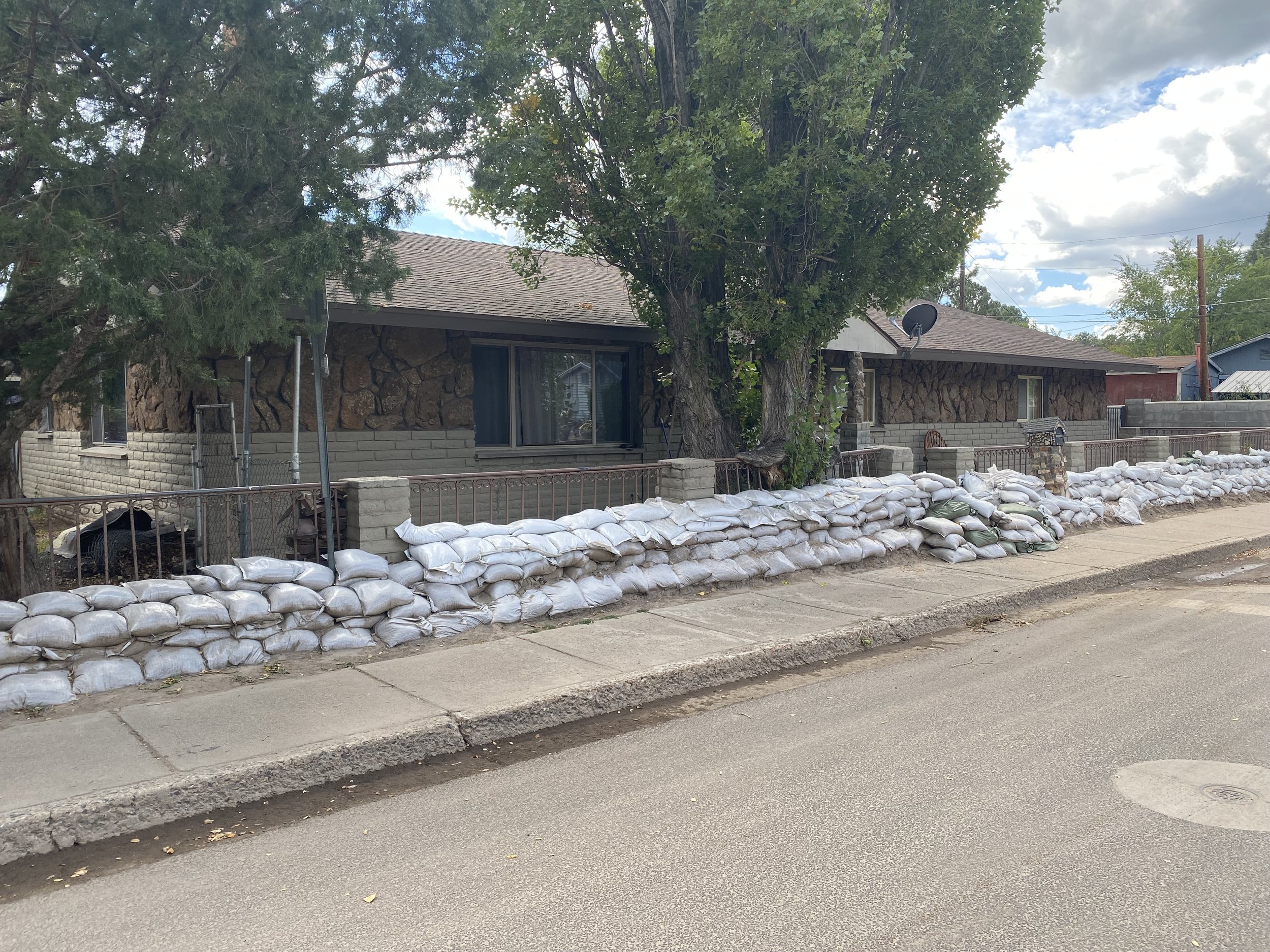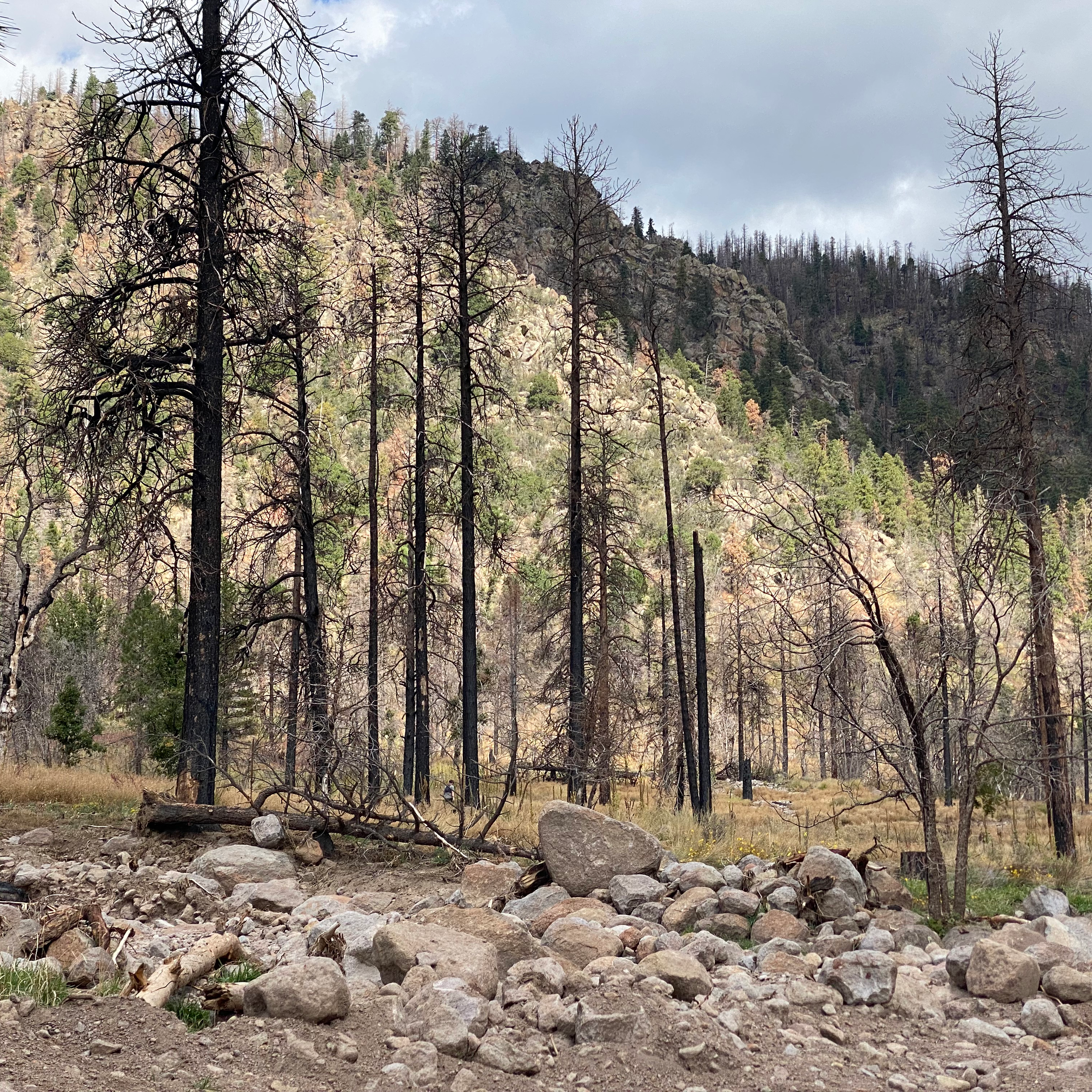Blog: Spotlight on Coconino County Wildfires
On Sunday morning, July 21, 2019, just about a mile north of Flagstaff, AZ, a hibernating fire, started from an excavator striking a rock, began to grow until it came to be what is now known as the Museum Fire. The fire was first spotted around 10:00 A.M. that day, and continued to burn at varying intensities for almost a month before being fully contained. During the days that the fire burned, one of the city’s most popular recreational spots was covered in a thick blanket of smoke and the sight of an orange sky loomed over city residents. Helicopters and ground crews worked tirelessly trying to contain the fire and prevent it from spreading further. Once the fire was 100% contained nearly a month later, on August 12th, it was determined that 1,961 acres were completely burned leaving the area, that is not only important to the local residents but also many species of concern, like the Mexican Spotted Owl, completely destroyed.
The concerns associated with the fire did not end that 12th of August. Based on Flagstaff’s previous experience with fire, namely the Schultz Fire, community leaders were worried about the potential for flooding. The Coconino County Flood Control District began to evaluate the region that was burned and determined that rain events could increase runoff-flooding, erosion, and sediment delivery to downhill areas. Additionally, they were able to map the zones and neighborhoods that would be most impacted by this type of event. Immediately, the county and community got to work, and distributed over 26,000 sandbags to low-lying neighborhoods like Sunnyside which is a densely Hispanic populated area of the city of Flagstaff. Volunteers from all over began to work with community members putting sandbags adjacent to homes, schools, and places that would be affected by the running water. After all the efforts carried out by the community, that summer there were no heavy monsoon rains. This is referred to as a “non-soon.” The following 2020 summer, the same outcome, and so this year as community members were unfortunately beginning to let their guard down, and remove sandbag barriers from their driveways, Flagstaff was hit with the biggest rainfall event to date on July 13, 14, 16, 21, and August 17. The combination of record-breaking water running off the burn scar areas on the hillside above, and the inability of the soil to absorb the water falling over the burn scar area, caused flooding carrying large amounts of ash, sediment, and burned debris to be washed downhill into the neighborhoods and streets of Flagstaff. At its peak, the water rushing down Flagstaff outsized the Colorado River.
Despite all the protective measures, the floods were still able to cause internal damage to 53 homes and 2 businesses; and cause exterior damage to 42 homes totaling $1,306,000 million dollars' worth of total damage to properties. Additionally, local hub and resource for Hispanic/ Latinx community members, Killip Elementary School, was severely damaged by the flood event, resulting in its permanent closure. Over the course of the last three years since the Museum Fire, over 700,000 total sandbags were distributed and over 10,000 tons of sediment were removed and taken to Cinder Lake Landfill from the burn area. The houses in the Sunnyside neighborhood as well as other areas of Flagstaff still have sandbags barricading homes, and sediment can still be seen coating the streets where just a few weeks ago those streets had been turned into rivers. The forest that burned during the Museum Fire is part of Flagstaff’s watershed and used to collect ground water during the monsoon seasons. However, as a result of the intense heat of the fire, the soil became hydrophobic (I.e., it repelled water instead of absorbing it) across the burn scar and have since lost all the topsoil due to the 2021 summer monsoons. It will likely take the next 10 to 12 years for the watershed to heal.
The outcry from the community of Flagstaff is clear. The residents want support in restoring the affected burn area from the Museum Fire, which still hasn’t been fully cleared of dead trees and debris making its way down to Flagstaff with the flood waters every time that it rains. This watershed restoration process will be critical in continuing to mitigate flood waters and promote water infiltration.
City of Flagstaff and Coconino County officials have struggled to secure federal funding through the Emergency Watershed Protection Program (EWPP) to carry out necessary forest restoration and management work. The main barrier preventing them from accessing these federal funds is a provision that disqualifies public lands, in this case Forest Service land, from benefitting from EWPP funds. Leaders like Jeronimo Vasquez, County Supervisor for Coconino County’s second district, which encompasses much of the low-lying land impacted by the recent flooding, have been urging federal legislators to allow for use of federal funds on public lands to prevent fires and manage fire aftermath.
Want to learn more on what we can do to advocate for our land and water? Sign up to be part of HECHO’s Advocacy Network. Receive updates and alerts of important issues happening right now and how we can use our collective voice to demand change. Click here to learn more and sign up.


